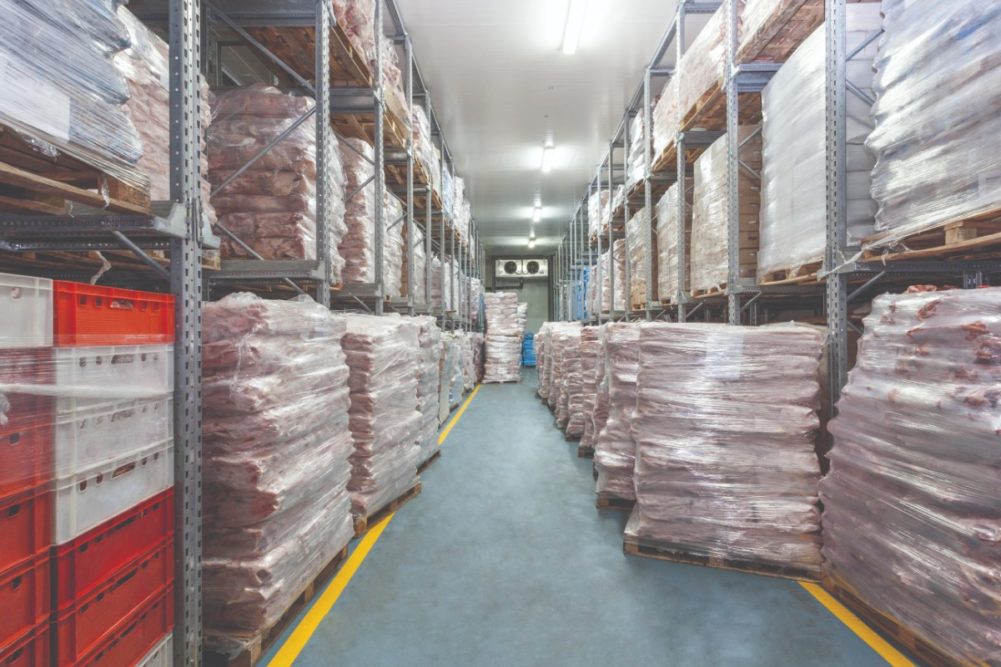We know that the COVID-19 pandemic that began in early 2020 impacted the US production and marketing of meat products. With the mandatory closing of schools and non-essential businesses, including dine-in food facilities, many people and families started consuming all three meals at home instead of at work, at school, or eating out. This required meat processing facilities to drastically reduce or stop production of some foodservice products and transition to or increase the production of products being sold in grocery stores. Along with all these changes, meatpacking and processing establishments were facing temporary closures due to employee illnesses, which created backlogs of livestock and resulted in meat supply chain issues that continued for some time.
Transitioning to frozen
To address supply chain issues, some establishments had to adjust their purchasing specifications and shift to products that had not previously been used, including the use of frozen products. This made the industry start questioning some of the long-standing purchasing practices. For example, the US beef industry has historically purchased and marketed primarily fresh (non-frozen) products, especially retail and foodservice products, but the uncertainty of supply during the pandemic made people question the role of freezing meat.
It’s no secret that freezing is an easy, effective and frequently used method for extending the shelf life of many foods. When freezing meat, it is important to remember that freezing slows bacterial growth, but it does not kill bacteria, therefore, appropriate handling during thawing is required to prevent bacterial growth. Freezing does stop the aging process that contributes to meat tenderness; therefore, the desired aging period should occur before freezing. Additionally, freezing has little to no impact on the nutritive value of meat. However, frozen meat has historically been considered inferior, especially in quality, and less desirable than fresh meat. For many, the thought was that something must have been wrong with the product for it to be frozen rather than sold in the chilled/refrigerated state.
To protect quality characteristics of meat, the “freeze fast, thaw slow” technique is a simple-sounding phrase often used to describe the most-recommended practice of freezing and thawing meat. Unfortunately, this technique is not as simple as it sounds. There are various methods for freezing and thawing meat products used across the industry leading to inconsistencies in product handling, as well as variability in quality of frozen products. We know that product handling before freezing, freezing rate, conditions during frozen storage, and thawing conditions and rate can all influence quality characteristics. In general, the freeze-fast, thaw-slow approach is designed to prevent cell lysing which can lead to dehydration, freezer burn, oxidative rancidity, excessive purge and excessive cooking losses – all of which negatively impact quality.
Given the different freezing and thawing methodologies in use, it is important to understand the relationships between freezing rate and various meat quality factors, such as drip loss, water-holding capacity, tenderness and color. Methods for freezing meat, may include:
- Still air – air is the heat transfer medium.
- Blast freezer – cold air, in rooms or tunnels, equipped with fans to provide rapid air movement.
- Plate freezer – product is placed on trays that are in direct contact with metal freezer plates.
- Liquid immersion/sprays – like sodium chloride brine, glycols and glycerol.
- Cryogenic freezing – condensed or liquefied gases, like liquid Nitrogen.
Still air is often the slowest freezing method, while contact freezers, such as direct contact (immersion freezers) and in-direct (plate freezers) are very efficient with regard to heat transfer rate. There are multiple research articles written about the impact of freezing on meat quality. One study showed that freezing M. longissimus by calcium chloride immersion resulted in decreased purge but had no effect on shear force values when compared to air freezing (Kim et al., 2015). Wang et al. (2020) compared freezing of a manufactured beef steak product in a refrigerator freezer, an immersion (ethanol, propylene glycol, NaCl) freezer, and with a plate freezer, and reported immersion freezing as optimal.
If optimal mechanisms for freezing and thawing meat can be used without sacrificing quality, then freezing of raw materials may help address supply-and-demand issues, such as increased needs around holidays, during marketing promotions, or during times when there are fluctuations in availability, such as those seen during COVID-19. Therefore, commercial freezing and thawing systems, such as the Spiral Immersion System (SIS), which uses a water or brine solution to both freeze and thaw products in a controlled and effective manner may change the way the industry views and uses frozen meat. Incorporating the most efficient freezing systems designed to preserve meat quality should be of greatest importance rather than using out-of-date freezing programs that have been used historically to save products when supplies exceed demand and products are near the end of their shelf life.


